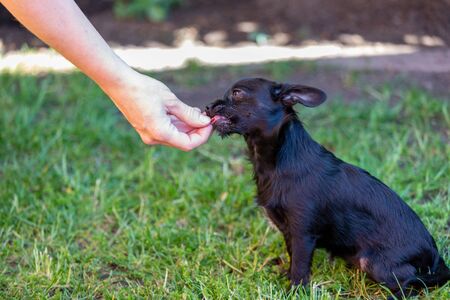Understanding Why Your Dog Is Stubborn
If you’ve ever found yourself frustrated by a dog who just won’t listen, you’re not alone. Before diving into training methods, it’s important to understand the root causes behind stubborn behavior. Often, what we label as “stubborn” is actually a combination of factors like breed tendencies, individual personality, and the environment in which your dog is raised. Some breeds, such as Huskies or Beagles, are known for their independent streaks—they were bred to think for themselves and can be less eager to please than other dogs. On the other hand, some dogs may seem stubborn simply because they’re anxious or distracted by their surroundings. Understanding that your dog’s behavior isn’t about being defiant on purpose, but rather a result of instincts and past experiences, helps set the foundation for effective training. Take time to observe your dog’s reactions and consider how their unique background might influence their willingness to cooperate. With this perspective, you’ll be better equipped to approach training with patience and empathy.
2. Building Patience: The Foundation of Training
If you’re working with a stubborn dog, patience isn’t just helpful—it’s absolutely essential. Unlike more easygoing pups, headstrong dogs can test your limits and challenge your expectations. That’s why building patience is the true bedrock of successful training. Understanding that progress may be slow and setbacks are part of the journey helps you keep your cool when things get tough.
Why Patience Matters with Stubborn Dogs
Stubbornness in dogs often comes from independence, intelligence, or past experiences. If you lose your patience, your dog will sense your frustration, which can make them even less likely to cooperate. By approaching each session calmly and consistently, you foster trust and set a positive tone for learning. Remember, your pup isn’t being difficult on purpose—they’re just figuring things out at their own pace.
Tips for Staying Patient During Training
| Tip | How It Helps |
|---|---|
| Set Realistic Expectations | Avoid disappointment by understanding that progress may be slow. |
| Take Breaks | Short sessions prevent frustration for both you and your dog. |
| Celebrate Small Wins | Recognizing progress keeps you motivated and positive. |
| Breathe and Reset | If you feel frustrated, pause to regroup before continuing. |
| Remember Your Why | Stay focused on the long-term goal of a well-behaved companion. |
The American Approach: Keep It Lighthearted
In American dog culture, training is often seen as a bonding opportunity—not a chore. Make it fun with upbeat praise or treats, and don’t be afraid to laugh at the little mishaps along the way. Keeping things light makes it easier to stay patient and helps your stubborn pup associate training time with positivity.

3. Proven Training Techniques for Strong-Willed Dogs
When it comes to training a stubborn or strong-willed dog, it’s important to use tried-and-true methods that work with their unique personalities. Here are some practical, step-by-step techniques that many American dog owners and trainers swear by:
Positive Reinforcement: Reward Good Behavior
Instead of focusing on what your dog is doing wrong, highlight the behaviors you want to see more often. Use treats, praise, or playtime as rewards when your dog follows a command or exhibits positive behavior. This helps build trust and makes learning fun, which is key for headstrong pups who may resist harsher methods.
Consistent Commands: Clarity is Key
Use the same words and gestures every time you give a command. For example, always say “sit” instead of alternating between “sit down” or “take a seat.” Consistency reduces confusion and helps your stubborn dog understand exactly what you expect from them. It’s also helpful to keep commands short and simple so your message is clear.
Create a Structured Routine
Stubborn dogs often thrive with structure. Set up a daily schedule for meals, walks, playtime, and training sessions. By creating predictable routines, you help your dog feel secure and less likely to push boundaries. Over time, this structure makes new commands and lessons easier to introduce.
Step-by-Step Approach: Patience Pays Off
Break down new skills into small steps and celebrate progress along the way. For instance, if you’re teaching “stay,” start by rewarding your dog for just a second or two of staying in place before building up to longer periods. Remember: patience is essential—especially with an independent-minded canine.
Expert Tip
If you hit a roadblock, don’t hesitate to reach out to a professional trainer familiar with stubborn breeds. Sometimes an outside perspective or hands-on coaching can make all the difference in your training journey.
4. Addressing Common Training Challenges
When training a stubborn dog, you’ll likely encounter several common roadblocks that can test your patience and consistency. Here, we break down some of the most frequent issues American dog owners face—like ignoring commands, leash pulling, and selective listening—and share practical solutions, including real-life stories from dog owners across the U.S.
Ignoring Commands
It’s frustrating when your dog looks right at you and chooses to ignore your instructions. This often happens if the dog is distracted or not motivated enough. Sarah from Austin, Texas, faced this with her beagle, Max. She found success by using high-value treats only during training sessions and keeping commands short and clear. Consistency was key—she practiced five minutes every morning before breakfast.
| Challenge | Solution | Owner Example |
|---|---|---|
| Dog ignores “sit” command | Use favorite treats and practice in quiet environments first | Sarah (Austin, TX) used chicken pieces for focus |
Leash Pulling
Pulled shoulders and tangled leashes are all too familiar to many American pet parents. James from Seattle struggled with his lab mix, Luna, who would drag him down the block every walk. He switched to a front-clip harness for better control and started rewarding Luna each time she walked beside him without pulling. Within two weeks, their walks became less of a tug-of-war.
| Challenge | Solution | Owner Example |
|---|---|---|
| Leash pulling on walks | Use a no-pull harness; reward calm walking next to you | James (Seattle, WA) used a front-clip harness & treats |
Selective Listening
If your dog listens sometimes but not always, it could be “selective hearing.” This is especially true in busy environments or around other animals. Maria from Denver noticed her husky, Rocky, only responded at home but ignored her in the park. By gradually increasing distractions during training and always reinforcing good behavior with praise or playtime, Rocky’s reliability improved over several months.
| Challenge | Solution | Owner Example |
|---|---|---|
| Selective listening outdoors | Train with distractions; use enthusiastic rewards and patience | Maria (Denver, CO) brought toys to the park for rewards |
Troubleshooting Tips from Trainers
- Keep sessions short—5 to 10 minutes is plenty for stubborn dogs.
- If progress stalls, take a step back to an easier task and rebuild confidence.
- Don’t underestimate the power of praise; some dogs respond even better to affection than food.
- If frustration builds up, pause training and try again later. Your mood matters!
The Bottom Line:
No matter how stubborn your dog may seem, there’s a solution for every challenge. With patience, creativity, and real-life strategies from fellow American pet parents, you’ll see steady progress—even if it comes one small victory at a time.
5. When to Seek Professional Help
Training a stubborn dog can be a true test of your patience and consistency, but sometimes even your best efforts aren’t enough. Recognizing when it’s time to consult a professional dog trainer or behaviorist is crucial for both your sanity and your dog’s well-being.
Signs You Need Expert Guidance
If your dog’s challenging behaviors—like excessive barking, aggression, destructive chewing, or refusal to follow basic commands—persist despite consistent training, it may be time to seek help. Other red flags include escalating anxiety, fearfulness, or if you feel frustrated and overwhelmed by the process. In the U.S., it’s common for pet owners to reach out to certified trainers or behaviorists when their dog’s actions start impacting daily life or safety.
What to Expect from Working with a Pro
When you work with a certified trainer or canine behaviorist in America, expect an assessment session first. The expert will observe your dog’s behavior, ask about history and routines, and identify triggers. They’ll then develop a customized training plan that often includes hands-on coaching for you as well as your dog. Many trainers use positive reinforcement methods, focusing on building trust and motivation rather than punishment. Sessions might happen at home, in group classes, or at specialized training centers depending on what works best for your situation.
Choosing the Right Professional
Look for credentials like CPDT-KA (Certified Professional Dog Trainer–Knowledge Assessed) or membership in reputable organizations such as the Association of Professional Dog Trainers (APDT). Don’t hesitate to ask about their experience with stubborn breeds or particular behavior issues. Read reviews and ask for recommendations from local vets or other dog owners in your community.
The Value of Outside Support
Bringing in an expert isn’t admitting defeat—it’s about setting you and your dog up for success. Sometimes an outside perspective is exactly what you need to break through training plateaus. In the U.S., working with professionals is seen as proactive and responsible pet ownership. With guidance tailored to your unique situation, you can overcome setbacks and build a stronger bond with your four-legged friend.
6. Celebrating Small Wins and Staying Motivated
When you’re working with a stubborn dog, it’s easy to get caught up in the big goals—like walking calmly on a leash or following commands every time. But it’s crucial to remember that progress often happens in small steps, and celebrating those minor victories keeps both you and your pup motivated. Training isn’t a sprint; it’s a marathon, and recognizing each achievement helps maintain positive momentum.
Why Small Wins Matter
Every time your dog responds to a command or even just pays attention for a little longer than before, you’re building trust and confidence on both sides. These moments are proof that your hard work is paying off, even if the change feels incremental. In American dog training culture, acknowledging progress—no matter how tiny—reinforces good habits and keeps frustration at bay.
Practical Ways to Celebrate
- Give verbal praise: A cheerful “Good job!” or “Yes!” lets your dog know they did something right.
- Treat rewards: Keep high-value treats handy for those breakthrough moments, even if it’s just a brief sit-stay or eye contact.
- Playtime: Incorporate a quick game of tug or fetch as a reward when your dog achieves something new.
Tips for Staying Motivated Over Time
- Set realistic goals: Break down bigger tasks into manageable steps, and celebrate completion of each one.
- Track your progress: Keep a simple training journal or use an app to log what worked each day. Seeing gradual improvement can be incredibly motivating.
- Connect with others: Sharing stories with friends, trainers, or online communities can help you see that you’re not alone in facing challenges—and their encouragement goes a long way.
The Long Game: Building Lasting Habits
No matter how stubborn your dog may seem, remember that every bit of progress is worth celebrating. Stay patient, keep things positive, and trust that consistency will eventually lead to the results you want. The journey might be slow, but every win—big or small—brings you closer to a well-trained companion.

